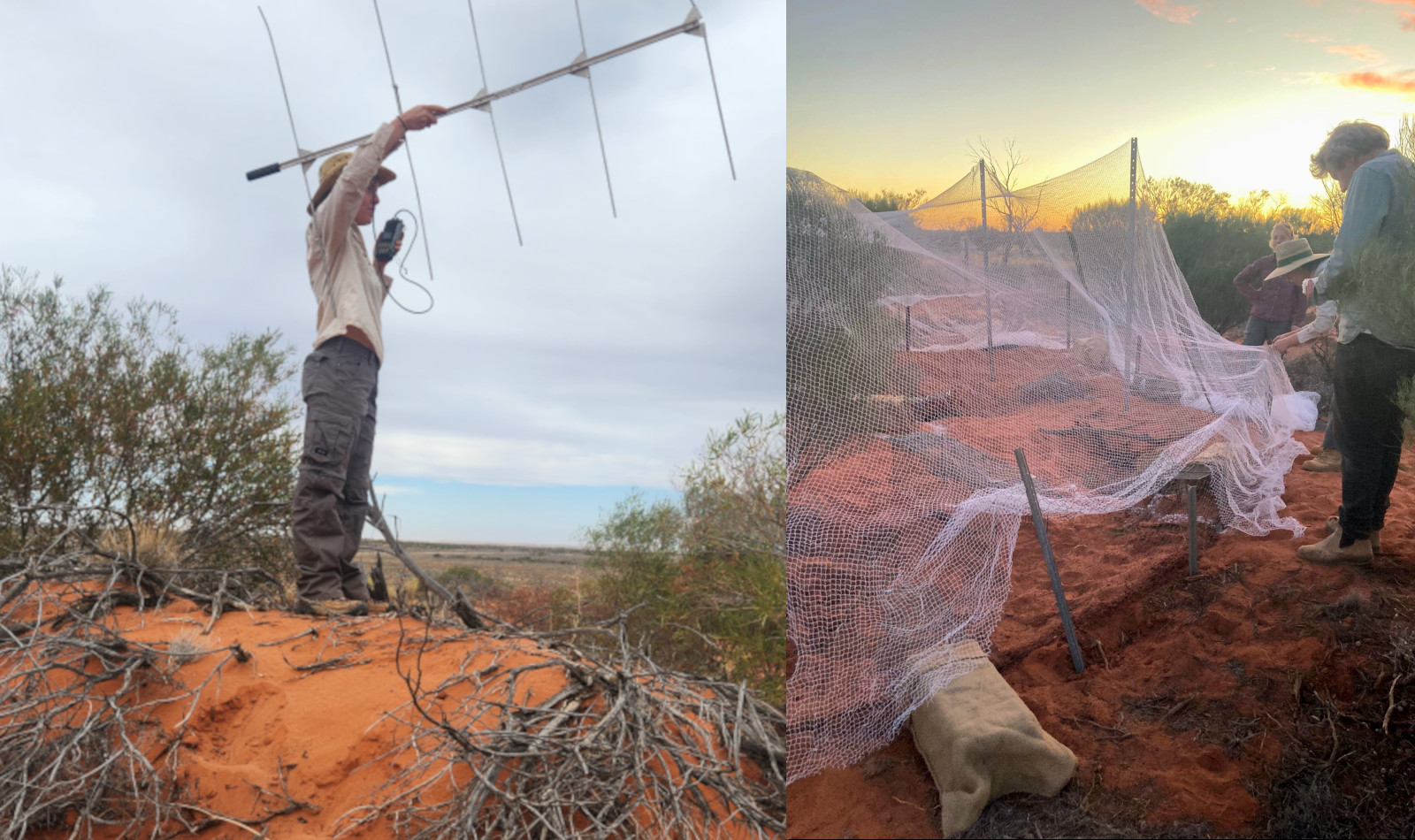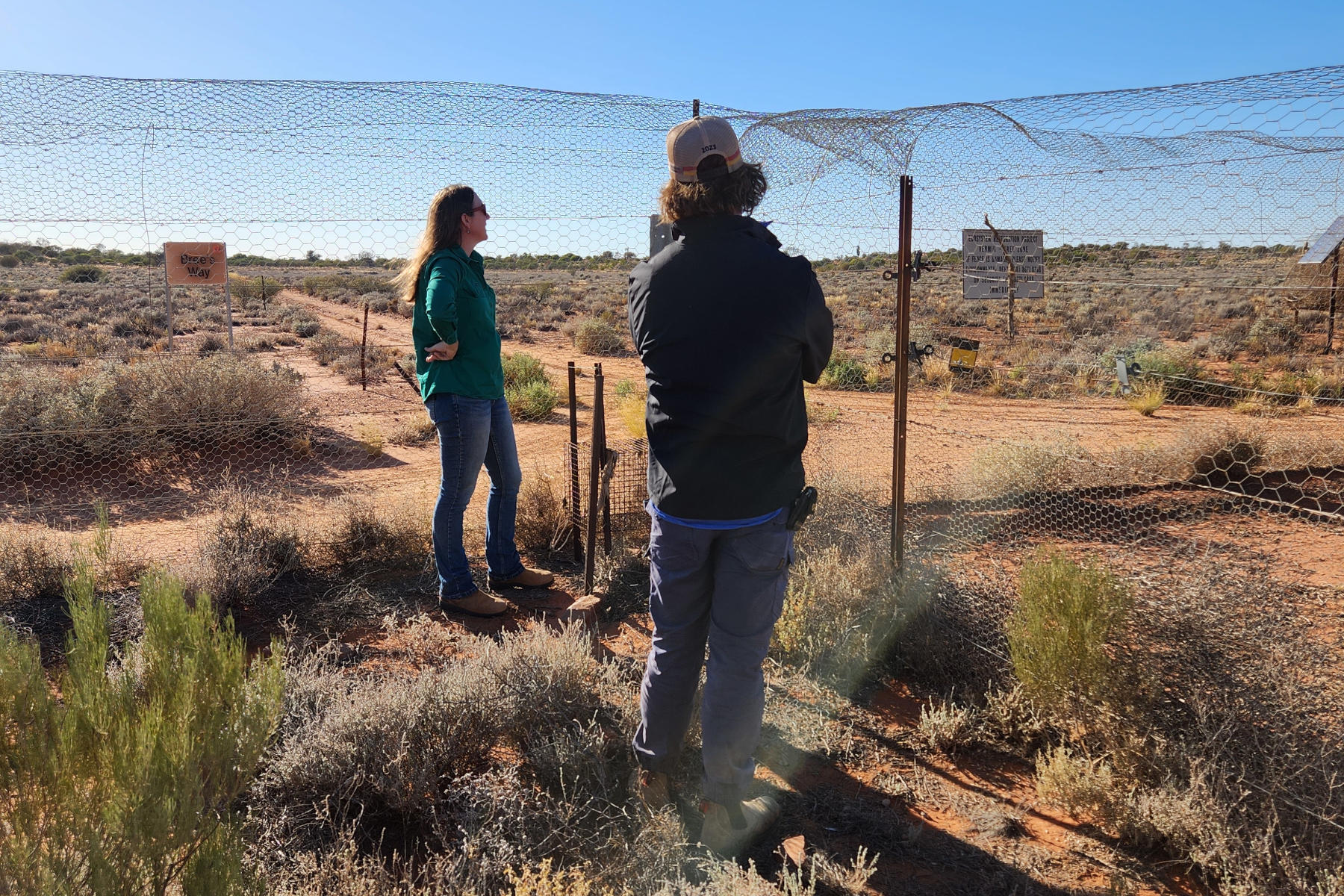Home /
News /
2024 /
The quest to keep quolls out of the quoll-free control paddock
The quest to keep quolls out of the quoll-free control paddock
Arid Recovery
14 June 2024

The great quoll caper: how a sneaky intruder challenged Arid Recovery’s defences and took us on a wild quoll-chase
A western quoll has disagreed with our research methods by sneaking into Arid Recovery's Main Exclosure, a fenced haven designed to be free of quolls. The quoll-free paddock is really important as an experimental control to help us understand the impact quolls have on the reserve ecosystem, and as an insurance area for threatened prey species. Our uninvited guest evaded capture for eight months. However, it was only the beginning of the epic showdown between our wily quoll and the Arid Recovery team.
The Reserve’s Main Exclosure is home to the burrowing bettong, Shark Bay bandicoot, and the greater bilby. They all thrive in an environment carefully protected from feral and native mammalian predators. Our mission is to study the impact of quolls on these populations by comparing different sections of the reserve, but it hasn't been easy keeping the Main Exclosure quoll-free.
In August 2023, tracks indicated we had an intruder: a quoll. This elusive animal evaded capture for months, leaving only footprints as proof of its presence. It wasn't until March2024 that the tenacious quoll was finally caught in a specially designed tree-mounted trap that prevented non-target captures of ground-dwelling animals. Catching the quoll was a milestone, but the real challenge lay ahead: discovering how it infiltrated the Main Exclosure and preventing future break-ins.
.jpg?lang=en-AU) Finally caught! The quoll in question was dubbed Sandy Nose by 8 year old RolandTo solve this mystery, we equipped the quoll with a VHF radio tracker and a GPS collar set to take fixes every three minutes. before releasing it far from the Main Exclosure. The hunt was on! Our team tracked the signal, determined to retrieve the GPS data that would reveal the entry point into the Main Exclosure.
Finally caught! The quoll in question was dubbed Sandy Nose by 8 year old RolandTo solve this mystery, we equipped the quoll with a VHF radio tracker and a GPS collar set to take fixes every three minutes. before releasing it far from the Main Exclosure. The hunt was on! Our team tracked the signal, determined to retrieve the GPS data that would reveal the entry point into the Main Exclosure.
For several days, the quoll’s radio collar signal remained elusive. Finally, we picked up a signal from inside the Main Exclosure—the quoll had managed to sneak back in. We still didn't know how it got in and needed that GPS data to uncover the entry point. Demonstrating remarkable tenacity, the quoll eluded our trapping efforts twice. Undeterred, our team intensified their efforts, deploying a variety of traps, including net canopies, burrow traps, and cage traps. On the third attempt, persistence paid off, and we successfully recaptured the quoll.
 Intern Charlotte radio-tracking the quoll (left), and Arid Recovery staff building an elaborate trap to snare the quoll (right)The GPS data was crucial in pinpointing the quoll's entry point at an internal corner, enabling us to bolster our defenses of the control paddock. After its recapture, the quoll was relocated to the Flinders Ranges, joining other western quolls in a suitable habitat. This epic exercise highlighted the importance of adaptability in our ongoing efforts to maintain experimental integrity at Arid Recovery.
Intern Charlotte radio-tracking the quoll (left), and Arid Recovery staff building an elaborate trap to snare the quoll (right)The GPS data was crucial in pinpointing the quoll's entry point at an internal corner, enabling us to bolster our defenses of the control paddock. After its recapture, the quoll was relocated to the Flinders Ranges, joining other western quolls in a suitable habitat. This epic exercise highlighted the importance of adaptability in our ongoing efforts to maintain experimental integrity at Arid Recovery.
 Manager of Arid Recovery, Kath Tuft and Conservation Land Manager, Nathan Manders assessing the incursion area and discussing how they were outsmarted by a quoll
Manager of Arid Recovery, Kath Tuft and Conservation Land Manager, Nathan Manders assessing the incursion area and discussing how they were outsmarted by a quoll